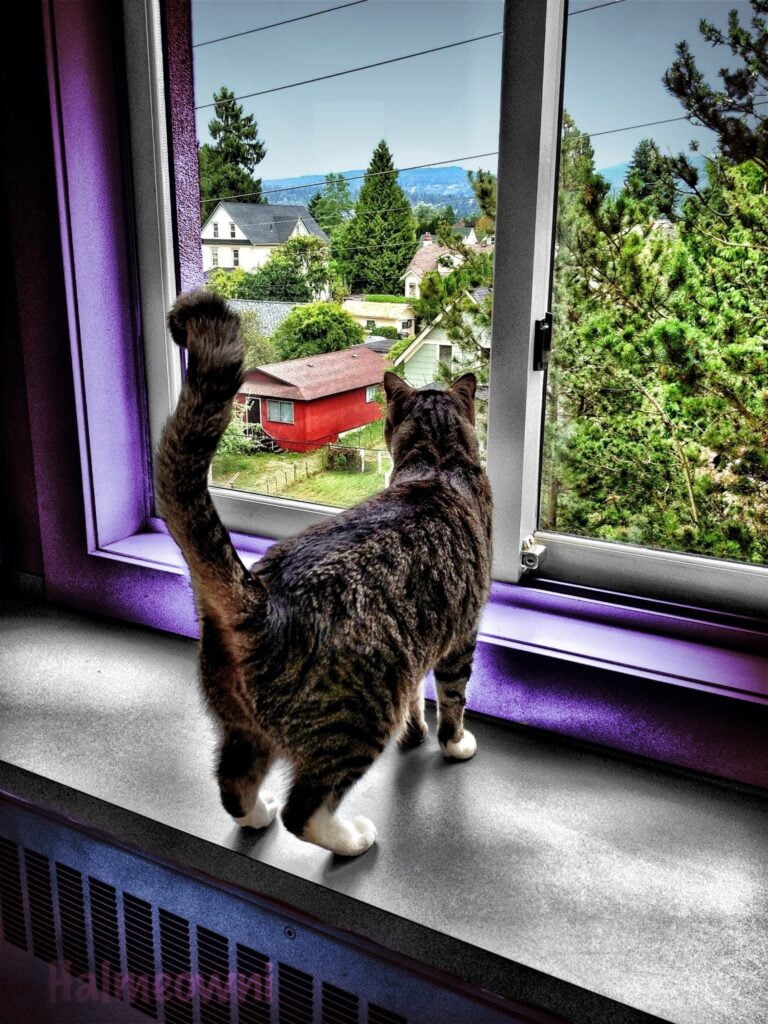Cats Indoor vs Outdoor debate
Cats Indoor vs Outdoor. There is much debate on the subject of whether it is better to keep your cats indoors vs outdoors. Some people believe that it is cruel to keep a cat cooped up inside all the time, and feel that cats should be able to roam and hunt freely.
Others argue that cats are safer inside and that they will live longer. As with most things in life, the answer to this question is not black and white – there are advantages and disadvantages to both options.

Cats Indoor vs Outdoor
In this blog post, we will explore the arguments for and against each option, so that you can make an informed decision about what is best for your feline friend.
For those who let their cats roam free outdoors, one of the main advantages is that they get to explore and play in a natural environment. This helps to keep them healthy and active, as well as reducing their risk of developing behavioural problems. Outdoor cats are also more likely to catch prey, which helps them stay agile and alert.
The downside is that outdoor cats are at greater risk of getting sick or injured. They may get hit by cars or attacked by other animals, and they’re also more likely to contract parasites or diseases from contact with other animals or parasites in the environment.
On the whole, studies prove that indoor cats live longer, healthier lives. You’ll also be able to catch any possible illnesses early and keep an eye on their health. However, some cats may get restless and bored indoors, leading to behavioural problems.
Individual lifestyle can be a decisive factor. If you’re away from home a lot or live in a dangerous area, it might be safer to keep your cat indoors. If you’re home more often and live in a quiet rural area and your cat is used to going outside, it’s probably okay to let them roam around a bit. Just be sure to keep an eye on them and make sure they’re microchipped in case they get lost. Microchip data should be updated every time you move house, or change telephone number.
A word about collars
Putting collars on cats can endanger their lives. Every year the RSPCA receives hundreds of reports of cats being injured or killed by their collars. Tragically, over 20% of outdoor cats die due to collars becoming caught up on branches or fencing. Flea collars, those with elastic inserts, or with buckles that don’t snap open, are also dangerous.
So, what’s the verdict? There is no right or wrong answer – it ultimately depends on your cat’s personality and your personal preferences. If you do decide to let your cat outdoors, be sure to take precautions to keep them safe. It is important to keep up to date with regular vaccinations to protect your outdoor cat. The vet can give advice on a vaccination schedule.

Cats Indoor vs Outdoor
Advantages of Keeping Cats Indoors:
Disadvantages of Keeping Cats Indoors:
Advantages of Keeping Cats Outdoors:

Disadvantages of Keeping Cats Outdoors:
Providing Stimulation for the Indoors Cat
Outdoor Time
The best way to keep your cat happy and healthy is by making sure they get enough exercise. Whether you want your cat to get more exercise or just be out in the fresh air, they can safely enjoy both. Cats love an outdoor space where they can explore, chew grass and play. Ideal cat-friendly plants include Spider Plants, Boston Ferns, Orchids and African Violets.
How would you like to walk with your cat? Well, it is possible! There are plenty of ways for indoor cats that don’t get enough exercise. One way we’ve found success at our house was by planting a secure garden and training them how to use harnesses/leads so they can explore outside the home safely without the threat of traffic or predators.
Enriching the Cat Environment
Indoor cats appreciate sunny places to nap and watch the world, such as window sills, and an assortment of toys and space to run around.
Climbing posts, scratching posts and hunting games all help to exercise the hunting instinct. Interactive toys are great entertainment to occupy bored cats, and include puzzle toys, climbing toys and spot beams.
If you have a spare bedroom, your indoor cat can have their own “room” with a litter box, water dish, and scratching post.
By observing these simple principles, indoor cats can enjoy happier lives with healthier lifestyles.
